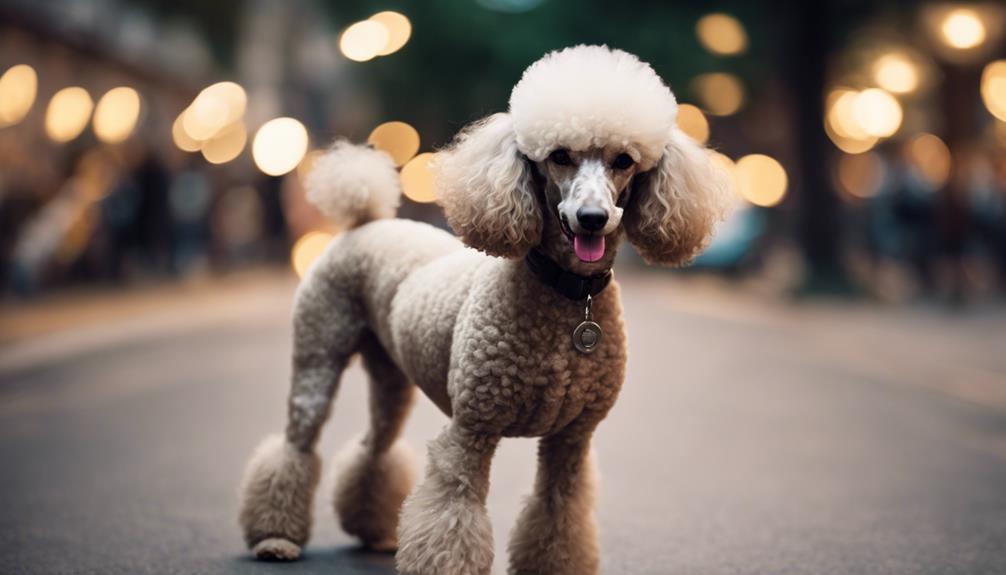Ever wondered about the fascinating journey of Poodle breeds through time? From their humble beginnings as skilled water retrievers to the diverse range of sizes and colors we see today, Poodles have a rich history worth exploring. The twists and turns in their evolution reveal intriguing insights into how this beloved breed has adapted and thrived over the centuries. Curious to uncover more about the captivating tale of Poodle breeds? Stay tuned to discover the compelling narrative that has shaped these elegant and intelligent dogs into the beloved companions they are today.
Key Takeaways
- Poodles originated in Germany and evolved in France, influenced by diverse ancestors.
- Poodles come in Standard, Miniature, and Toy sizes for specific roles.
- Poodles are known for intelligence, adaptability, and diverse coat colors.
- Responsible breeding practices ensure future generations of healthy and adorable Poodles.
Origins of Poodle Breeds

Poodles, believed to have originated in Germany and later established as a distinctive breed in France, have a fascinating history that intertwines with various ancestral influences. The ancestors of Poodles, such as the North African Barbet and Asian herding dogs, contributed to their development into the elegant breed we know today. In the 1400s, Miniature and Toy Poodles emerged to cater to the Parisian bourgeoise, showcasing the breed's adaptability to different roles. Standard Poodles, on the other hand, were utilized for fishing in Germany and duck hunting in France, displaying their versatility and intelligence. Toy Poodles, with their small size and charming demeanor, served as companions to nobility, demonstrating that Poodles were valued not only for their working abilities but also for their companionship qualities. The origins of Poodle breeds reveal a rich history of diverse influences that have shaped these dogs into the beloved companions they are today.
Development of Poodle Varieties
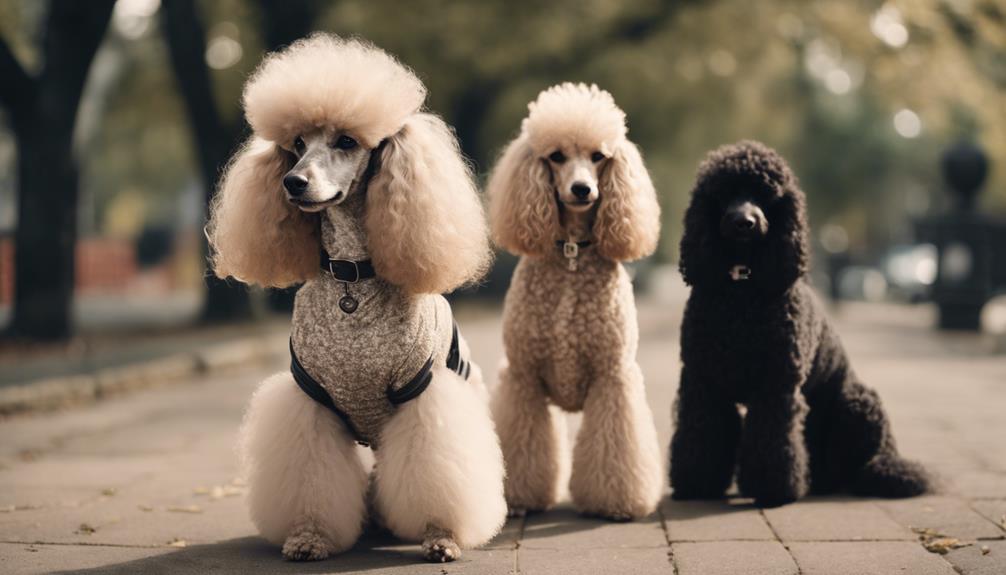
Poodle varieties encompass a range of sizes, from the Standard to the Miniature and the Toy, each tailored for specific functions and preferences. The development of these size variations in Poodles is intertwined with the breed's coat color diversity, showcasing a wide array of options for potential owners. Understanding the evolution of Poodle varieties offers insights into how this adaptable breed has catered to different societal needs and tastes over time.
Size Variations in Poodles
Downsizing the Poodle breed led to the development of three distinct varieties: Standard, Miniature, and Toy. These size variations serve specific purposes and have unique characteristics that cater to different needs. Here's why each size is significant:
- Standard Poodle stands: Originally bred as a water dog for activities like fishing and duck hunting.
- Miniature Poodles: Emerged in the 1400s for truffle hunting, providing a smaller working companion.
- Toy Poodle: First developed in the 18th century to be a loyal companion, emphasizing companionship and smaller size. Each variation contributes to the diverse roles Poodles play, showcasing their adaptability and versatility to serve various functions.
Coat Color Diversity
During the evolution of Poodle breeds, the development of coat color diversity played a crucial role in shaping the various varieties we see today. Poodles exhibit a wide range of coat colors, including apricot, black, blue, brown, cafe au lait, cream, gray, red, silver, silver beige, and white. These colors can appear in various patterns such as solid, parti, phantom, abstract, or sable, adding to the diversity within the breed. The genetics of coat colors in Poodles involve intricate inheritance patterns, allowing for the creation of unique color combinations. The American Kennel Club (AKC) recognizes 10 standard colors for Poodles, each with its own variations in shades and patterns. Additionally, Poodle coat colors may change as the dog matures, often showing different shades in puppyhood compared to adulthood.
| Coat Colors | Examples | Patterns |
|---|---|---|
| Apricot | Light golden | Solid |
| Black | Deep black | Solid |
| Silver | Shiny silver | Solid |
Poodles in Different Eras
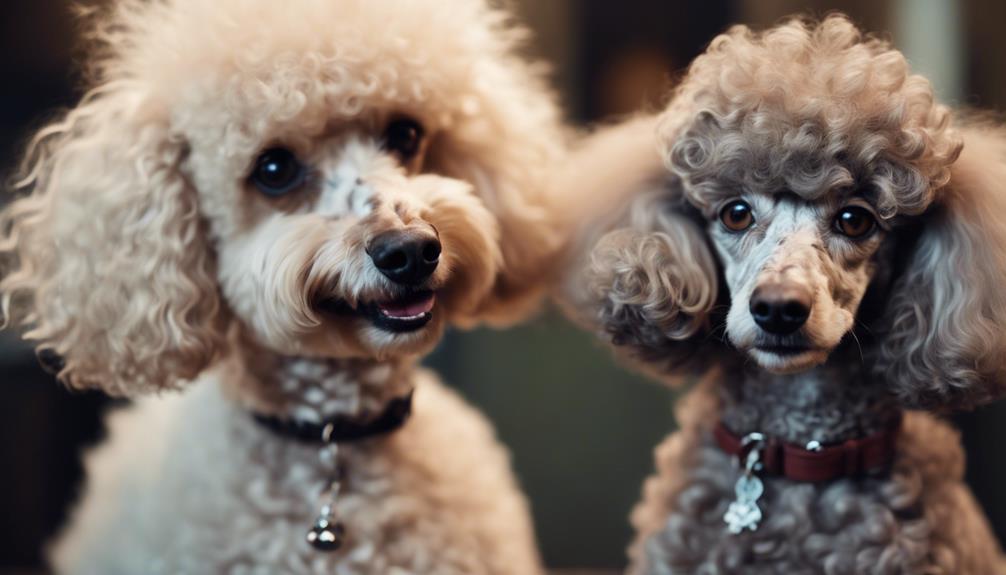
With their agility and intelligence, Poodles have left a lasting mark on different historical eras, showcasing their versatility and adaptability. Throughout history, Poodles have played various roles, from circus performers to hunting companions, making them a beloved breed across different time periods.
- Poodles were popular circus performers in the past, demonstrating their intelligence and versatility to captivated audiences with their impressive tricks and agility.
- Historical artworks from the 17th century depict dogs resembling Poodles, indicating their presence and significance in different eras, showcasing their enduring appeal and recognition over time.
- The distinctive coat clipping of Poodles served practical purposes for hunting and protection in different historical eras, highlighting their adaptability to various tasks and environments.
Poodles have not only been celebrated in different regions like Germany and France but have also made a mark globally, solidifying their position as a versatile and enduring breed throughout the ages.
Influences on Poodle Evolution
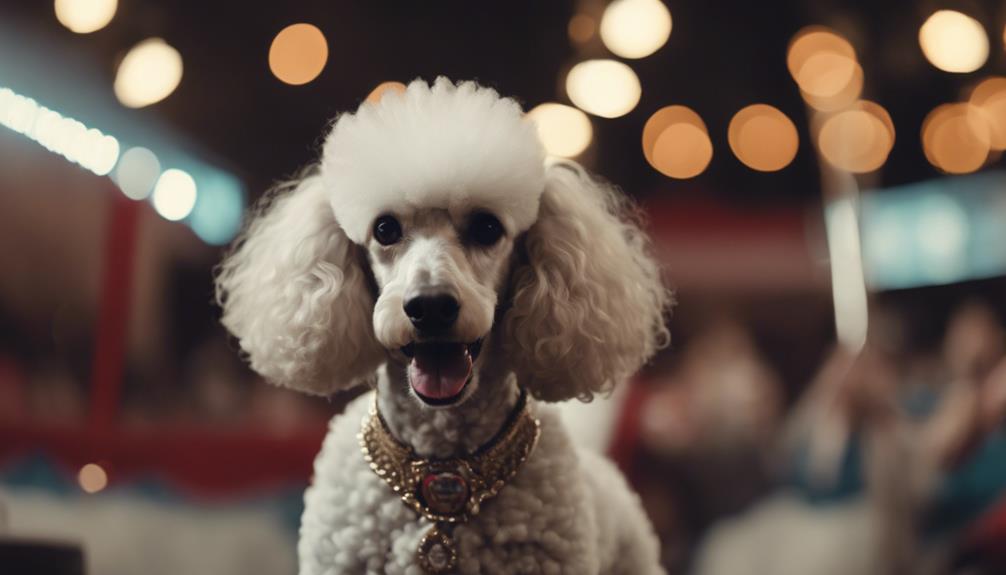
Throughout the evolutionary history of Poodles, influences from ancestors such as the North African Barbet and Asian herding dogs have played a significant role in shaping the breed's characteristics and traits. The connection to the Barbet is particularly notable, as it is believed to be a direct ancestor of the Poodle, contributing to its distinctive curly coat and water-loving nature. The influence of Asian herding dogs can be seen in the Poodle's intelligence, agility, and herding instincts, which have been refined over generations. These ancestral influences have helped the Poodle evolve into the versatile and adaptable breed we know today.
The intermingling of traits from the Barbet and herding dogs has not only impacted the physical appearance of the Poodle but has also influenced its behavior and skills. This blend of ancestry has given rise to a breed known for its keen intellect, trainability, and playful demeanor. Understanding these ancestral influences provides valuable insight into the evolution of the Poodle and the unique qualities that make it such a beloved companion today.
Modern Poodle Breed Characteristics

Modern Poodles come in three distinct sizes – standard, miniature, and toy – each with its own set of unique characteristics. Their versatile coat clipping styles not only showcase their elegance but also serve practical purposes, especially in water activities. Poodles are well-known for their intelligence, adaptability, and grace, making them top contenders in obedience trials and dog shows.
Poodle Breed Sizes
Poodle breeds exhibit distinct variations in size, with Standard, Miniature, and Toy categories each having specific height ranges and weight specifications. The Standard Poodle stands between 45-62 cm tall, the Miniature Poodle ranges from 28-35 cm, and the Toy Poodle is typically 24-28 cm in height. These size variants were developed for different purposes, with larger Poodles historically used for hunting and smaller ones as companions. Despite their differences in size, all Poodle sizes are judged by the same standards in dog shows and competitions.
- Standard Poodles: 45-62 cm tall
- Miniature Poodles: 28-35 cm tall
- Toy Poodles: 24-28 cm tall
Poodle Coat Varieties
The diverse coat varieties of Poodles showcase a range of textures and colors, contributing significantly to the breed's distinctive charm and appeal. The Standard Poodle features a curly, dense coat, while the Miniature Poodle boasts a softer, wavier texture. In contrast, the Toy Poodle displays a fine, curly coat. Poodle coat colors can vary from solid black, white, or apricot to striking multi-colored patterns like parti, phantom, and sable. Poodles have a single-layered, non-shedding coat that necessitates regular grooming to prevent matting and uphold their unique appearance. Show Poodles often exhibit elaborate grooming styles such as the Continental Clip or the English Saddle, while pet Poodles commonly sport more practical trims like the Puppy Clip. These coat varieties are pivotal in defining breed standards and enhancing the Poodle's graceful look and adaptability across various activities.
Future Trends in Poodle Breeding
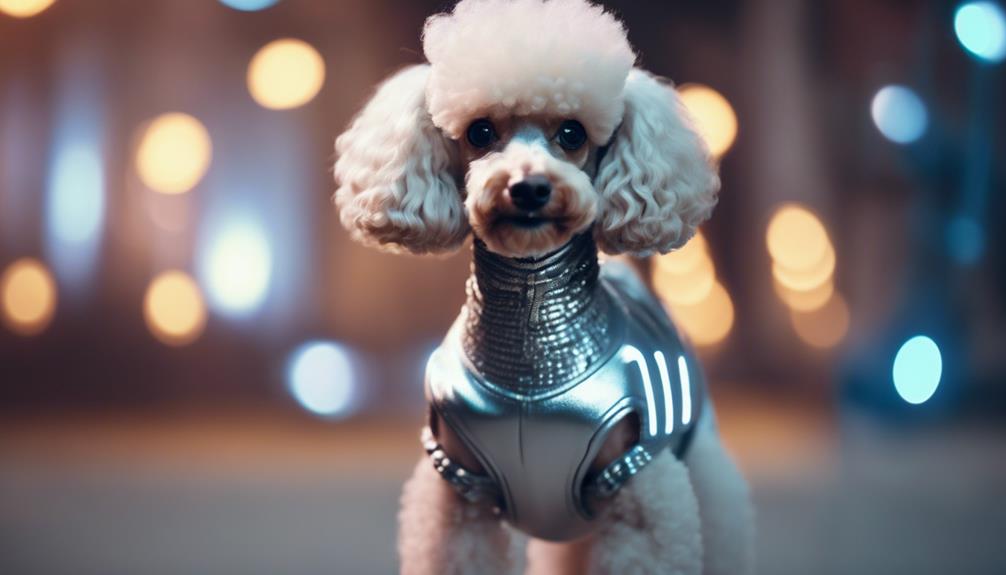
In the realm of future trends in Poodle breeding, an increasing focus lies on the development of mixed breeds like Labradoodles and Schnoodles. Breeders are also utilizing advanced genetic testing to enhance health and quality standards. This approach ensures that future generations of Poodles are not only adorable but also healthy and well-suited for various lifestyles.
Key Points:
- Exploration of Mixed Breeds: Breeders are exploring the creation of new mixed breeds like Labradoodles and Schnoodles to combine the desirable traits of both Poodles and other breeds.
- Genetic Testing for Health: By incorporating advanced genetic testing, breeders can identify and mitigate potential hereditary health issues, promoting healthier Poodle populations.
- Emphasis on Responsible Breeding: Responsible breeding practices are crucial to ensure the integrity and health of Poodle breeds. It involves careful selection of breeding pairs to maintain and improve breed standards while prioritizing the well-being of the dogs.
Frequently Asked Questions
What Did Poodles Evolve From?
Poodles evolved from water dogs like the North African Barbet and Asian herding dogs. Their early development involved various breed variations influenced by genetics. Poodle ancestors laid the foundation for their modern characteristics, showcasing adaptability, intelligence, and charm.
What Is the Origin of the Poodle Breed?
The origin of the Poodle breed traces back to France, where it developed as a skilled waterdog. Through selective breeding, this versatile breed evolved into the iconic Poodle known for its intelligence, elegance, and adaptability in various roles.
What Is the Evolution of the Standard Poodle?
As a standard poodle owner, you'll appreciate the breed's evolution. From their roots as water retrievers to show standards today, their size variations and distinctive grooming styles showcase their development as elegant and intelligent companions.
What Is the Genetic History of a Poodle?
In understanding the genetic history of a Poodle, DNA analysis reveals a complex web of breed development. Selective breeding over centuries has shaped their genetic diversity, emphasizing hereditary traits for specific roles like hunting and companionship.
Conclusion
As you reflect on the history and evolution of Poodle breeds, imagine the elegant and intelligent companions that have graced our lives for centuries. From their origins as water retrievers to their modern roles as beloved companions and show dogs, Poodles have truly left a pawprint on our hearts. With their distinctive coat clipping and versatile nature, these remarkable dogs continue to capture our attention and admiration, promising a future filled with endless love and companionship.
